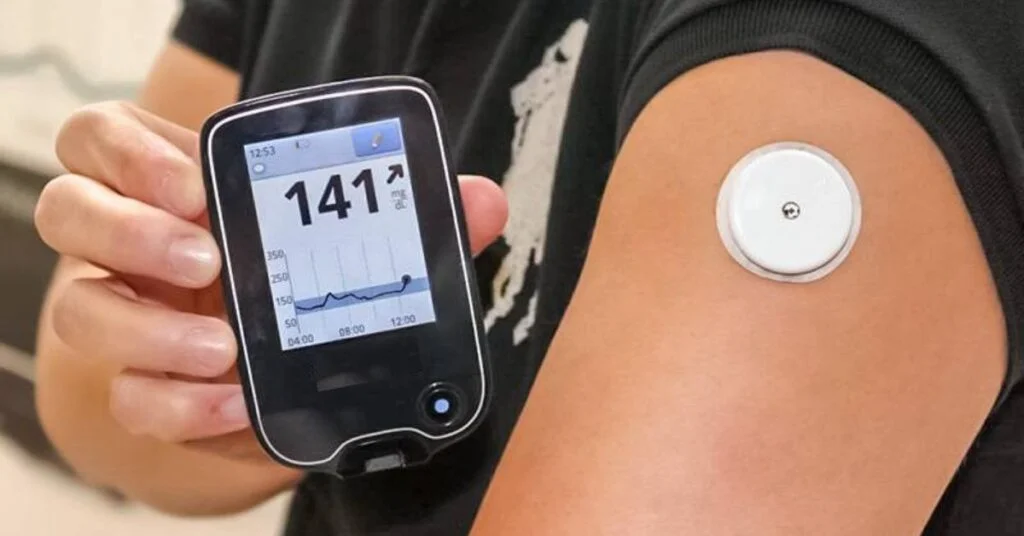A continuous glucose monitor (CGM) offers immediate insights into your glucose levels, aiding in the identification of patterns and the implementation of lifestyle modifications for enhanced metabolic health. CGMs consist of a skin-inserted sensor for glucose measurement and a reader device to progressively interpret this data.
When you begin using a CGM, spend the first week acclimating to it, observe the effects of your standard diet in the second week, and experiment with changes in the third week, refining a healthy routine in the fourth week. Focus on glucose stability, aiming for ideal fasting levels around 4.0-4.7 mmol/L and post-meal peaks below 6.1 mmol/L, rather than striving for perfect consistency. How to do it? Our Board Certified Lifestyle Medicine Physician, Dr. Reshma and Digital Medicine expert Dr. Kohila Devan from Poliklinik Optimal Health will coach you.
Long-term CGM Usage
Using a CGM long-term can assist in discovering a personalized diet that suits you best, enhancing metabolic flexibility, managing weight and PCOS symptoms, and diminishing the risk of diabetes. Factors such as food, exercise, sleep, and stress can all influence our blood glucose levels. While you might feel these changes—for instance, a mid-morning crash after a carb-heavy breakfast—the most reliable way to understand the impact on your blood sugar is by using a CGM.
Why Glucose Monitoring Matters
Glucose is critical for metabolic health as it’s a primary energy source for our cells. Fluctuating blood sugar levels can cause various health issues, from immediate effects like fatigue and brain fog to long-term consequences such as weight gain, Type 2 diabetes, dementia, and heart disease. A 2018 study revealed that about half of the participants with “normal” glucose levels experienced post-meal glucose spikes into the prediabetic or diabetic range following certain meals. Using a CGM can help you spot and prevent such spikes. Who wants to know their sugar level after a Bubble Tea and Nasi Lemak?
Getting and Using a CGM
For those interested, you can visit our clinic, Poliklinik Optimal Health in Eco Majestic Semenyih, or visit our website https://www.optimalhealth.com.my to message us. Those far from our clinic can book teleconsultations with us. The CGM, consisting of a sensor and a data-reading mechanism, is then shipped to you, and we will have frequent teleconsulting throughout your journey to modify your lifestyle.
Understanding CGM Mechanics
A CGM sensor is typically placed on the back of your arm or stomach. It measures glucose levels through a reaction involving glucose oxidase and emits a current that is transformed into a glucose concentration reading. This data is wirelessly transmitted to an app, displayed in mmol/L, and often charted for easy tracking of changes over time.
Initial Steps with a CGM
When first using a CGM, apply it to a clean area of your skin. The sensor remains in place for about 14 days. Initially, focus on familiarizing yourself with logging food and monitoring blood glucose reactions. In the following weeks, maintain your usual diet, experiment with adjustments, and identify sustainable changes.
Interpreting CGM Data
CGMs, like Levels, help us make sense of your data, linking it to your behaviors and suggesting actionable steps. The aim is to maintain stable glucose levels, indicated by fasting levels between 4.0–4.7 mmol/L, a 24-hour average around 4.4–5.6 mmol/L, and post-meal peaks below 6.1 mmol/L with minimal increases from pre-meal levels. Glucose should ideally remain between 3.9 and 6.1 mmol/L for most of the day.
Long-Term CGM Use
CGMs are not just for short-term insights but can guide long-term lifestyle changes for holistic health. They can help create a personalized diet, improve metabolic flexibility, manage weight, alleviate PCOS symptoms, and reduce diabetes risk. Continuous or periodic use of a CGM can provide ongoing support and adjustment of your health plan.
Cautions
Although CGMs offer significant benefits, they should be used thoughtfully to avoid inducing anxiety or obsessive behavior. They are particularly useful for individuals without histories of disordered eating or anxiety related to food and exercise.



